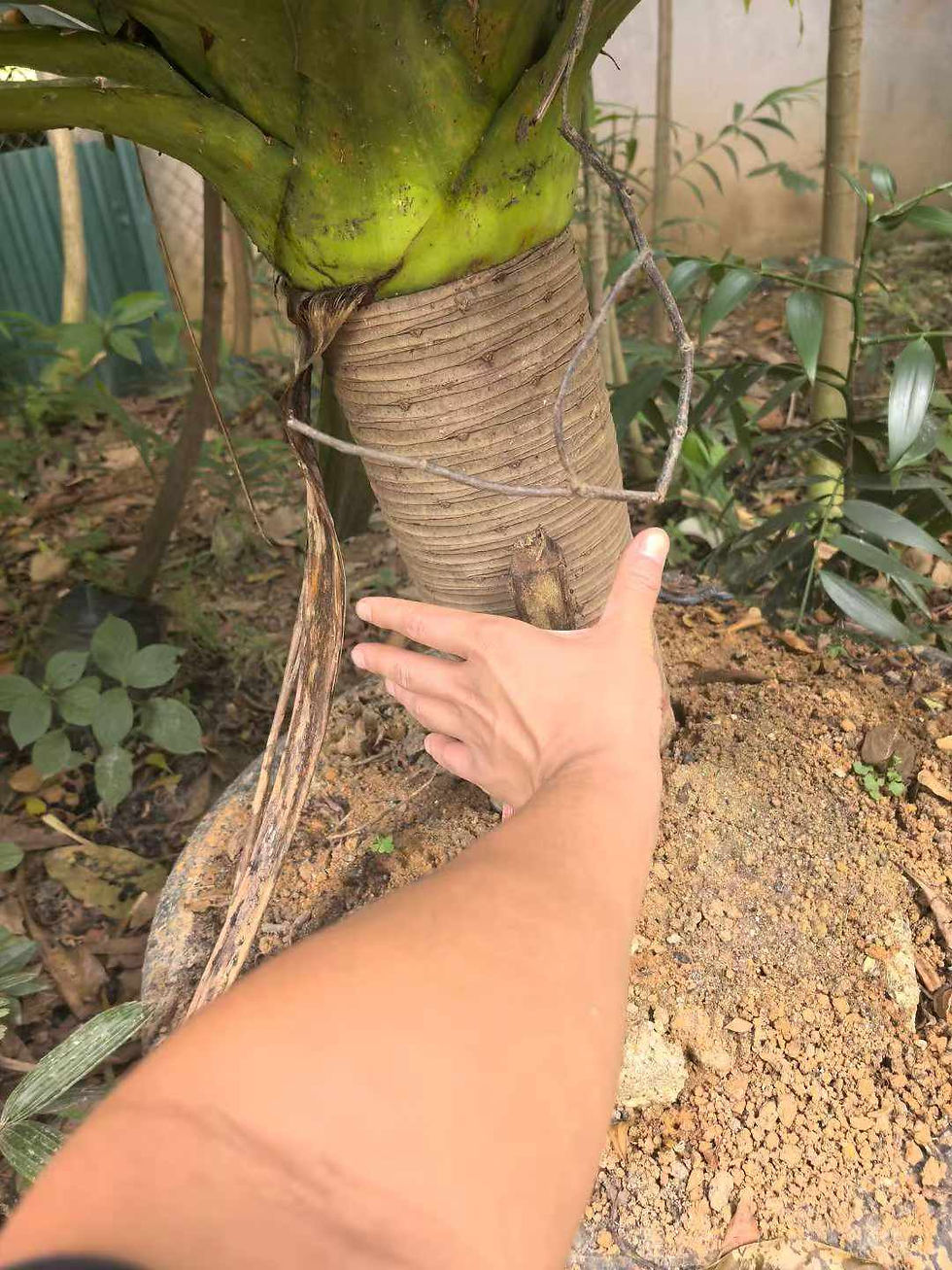Hevea brasiliensis
Large trees, up to 30 m tall, with much milky juice. Petiole 5-15 cm, apex usually with 2(-4) glands; leaflets 3, elliptic, 10-25 × 4-10 cm, both surfaces glabrous, base cuneate, margin entire, apex acute to acuminate; lateral veins 10-16, reticulate veins prominent. Panicles axillary, to 16 cm, gray-white pubescent. Male flowers: sepals ovate-lanceolate, ca. 2 mm; stamens 10, in 2 series; anthers 2-locular, longitudinally dehiscent. Female flowers: sepals as in male, but larger; ovary (2 or)3(-6)-locular; stigmas 3, sessile. Capsules ellipsoidal, 5-6 cm in diam., with 3 longitudinal grooves, apex rostrate, base retuse; epicarp thinner, with reticulate stripes; endocarp thicker, woody. Seeds ellipsoidal, gray-brownish, maculate-striate. Fl. May-Jun, fr. Aug-Sep.
Cultivated. S Fujian, Guangdong, Guangxi, Hainan, Taiwan, Yunnan [native to Brazil; widely introduced throughout the tropics].
This species is cultivated in great numbers for the production of rubber.

































